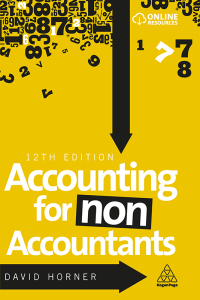Laker Company reported the following January purchases and sales data for its only product. The Company uses a perpetual inventory system. For specific identification, ending inventory consists of 280 units from the January 30 purchase, 5 units from the January 20 purchase, and 15 units from beginning inventory. Date Activities Unite Acquired at Cost January 1 Beginning inventory Units sold at Retail 190 units $ 7.00 - $ 1,330 January 10 Sales 150 units $ 16.00 January 20 Purchase 110 units $ 6.00 - 660 January 25 Sales 130 units e $ 16.00 January 30 Purchase 280 units $ 5.50 1,540 Totals 580 units $ 3,530 280 units 1. Compute gross profit for the month of January for Laker Company for the four Inventory methods. 2. Which method yields the highest gross profit? 3. Does gross profit using weighted average fall between that using FIFO and LIFO? 4. If costs were rising instead of falling, which method would yield the highest gross profit? Complete this question by entering your answers in the tabs below. Reg 1 Reg 2 to 4 Compute gross profit for the month of January for Laker Company for the four inventory methods. (Round cost per unit to 2 decimal places and final answers to the nearest whole dollars.) LAKER COMPANY For Month Ended January 31 Specific Weighted Identification Average FIFO LIFO Sales Cost of goods sold Gross profit Reg 2 to 4 > Laker Company reported the following January purchases and sales data for its only product. The Company uses a perpetual inventory system. For specific identification, ending inventory consists of 280 units from the January 30 purchase, 5 units from the January 20 purchase, and 15 units from beginning inventory. Activities Units Acquired at Cost Units sold at Retail Beginning inventory 190 units $ 7.00 - 150 units e 110 units @ $6.00 = 130 units e 280 units $5.50 - 580 units $ 3,530 280 units $ 1,330 Date January 1 January 10 January 20 January 25 January 30 $ 16.00 660 Sales Purchase Sales Purchase Totals $ 16.00 1,540 1. Compute gross profit for the month of January for Laker Company for the four inventory methods. 2. Which method yields the highest gross prokt? 3. Does gross profit using weighted average fall between that using FIFO and LIFO? 4. If costs were rising instead of falling, which method would yield the highest gross profit? Complete this question by entering your answers in the tabs below. Reg 1 Reg 2 to 4 2. Which method yields the highest gross profit? 3. Does gross profit using weighted average fall between that using FIFO and LIFO? 4. If costs were rising instead of falling, which method would yield the highest gross profit? 2. Which method yields the highest gross profit? 3. Does gross profit using weighted average fall between that using FIFO and LIFO? 4. If costs were rising instead of falling, which method would yield the highest gross profit? a. On July 31, the company's Cash account has a $25,293 debit balance, but its July bank statement shows a $27,879 cash balance b. Check Number 3031 for $1,600, Check Number 3065 for $576, and Check Number 3069 for $2,368 are outstanding checks as of July 31. c. Check Number 3056 for July rent expense was correctly written and drawn for $1.260 but was erroneously entered in the accounting records as $1,250. d. The July bank statement shows the bank collected $7,000 cash on a note for Branch. Branch had not recorded this event before receiving the statement e. The bank statement shows an $805 NSF check. The check had been received from a customer, Evan Shaw, Branch has not yet recorded this check as NSF. 1. The July statement shows a $11 bank service charge. It has not yet been recorded in miscellaneous expenses because no previous notification had been received 9. Branch's July 31 dally cash receipts of $8,132 were placed in the bank's night depository on that date but do not appear on the July 31 bank statement 16 Required: 1. Prepare the bank reconciliation for this company as of July 31. BRANCH COMPANY Bank Reconciliation July 31 Book balance Add Bank statement balance Add: Deduct Deduct: a. On July 31, the company's Cash account has a $25,293 debit balance, but its July bank statement shows a $27,879 cash balance b. Check Number 3031 for $1,600, Check Number 3065 for $576, and Check Number 3069 for $2,368 are outstanding checks as of July 31 c. Check Number 3056 for July rent expense was correctly written and drawn for $1,260 but was erroneously entered in the accounting records as $1,250 d. The July bank statement shows the bank collected $7.000 cash on a note for Branch. Branch had not recorded this event before receiving the statement e. The bank statement shows an $805 NSF check. The check had been received from a customer, Evan Shaw. Branch has not yet recorded this check as NSF. f. The July statement shows a $11 bank service charge. It has not yet been recorded in miscellaneous expenses because no previous notification had been received. g. Branch's July 31 dolly cash receipts of $8,132 were placed in the bank's night depository on that date but do not appear on the July 31 bank statement 2. Prepare the journal entries necessary to make the company's book balance of cash equal to the reconciled cash balance as of July 31. (If no entry is required for a transaction/event, select "No journal entry required" in the first account field.) View transaction list Journal entry worksheet 2 3 4 5 6 7 > Record the adjusting entry required, if any, related to the July 31 cash balance. Note: Enter debits before credits Transaction General Journin Debit Credit










